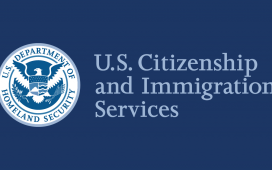WASHINGTON—U.S. Citizenship and Immigration Services (USCIS) announced a Temporary Final Rule (TFR) that increases the automatic extension period for employment authorization and Employment Authorization Documents (EADs), available to certain EAD renewal applicants, to up to 540 days. The increase, which will be effective immediately on May 4, 2022, will help avoid gaps in employment for noncitizens with pending EAD renewal applications and stabilize the continuity of operations for U.S. employers.
“As USCIS works to address pending EAD caseloads, the agency has determined that the current 180-day automatic extension for employment authorization is currently insufficient,” said USCIS Director Ur M. Jaddou. “This temporary rule will provide those noncitizens otherwise eligible for the automatic extension an opportunity to maintain employment and provide critical support for their families, while avoiding further disruption for U.S. employers.”
For several years, USCIS has been in a precarious financial situation that has impaired the efficient completion of caseloads. The COVID-19 pandemic exacerbated these challenges in 2020, in addition to a hiring freeze and furlough threat leading to workforce attrition and severely reduced capacity. In 2021, before USCIS could recover from these fiscal and operational impacts, there was a sudden and dramatic increase in EAD initial and renewal filings, as explained in detail in the TFR.
The TFR, which only applies to those EAD categories currently eligible for an automatic up to 180-day extension, will temporarily provide up to 360 days of additional automatic extension time (for a total of up to 540 days) to eligible applicants with a timely-filed Form I-765 renewal application pending during the 18-month period after publication of the TFR while USCIS continues to work through pending caseloads that were exacerbated by the COVID-19 pandemic. This timeframe will allow USCIS an opportunity to address staffing shortages, implement additional efficiencies, and meet Director Jaddou’s recently announced goal of achieving a three-month cycle time for EAD applications (generally comparable to a median three-month processing time) by the end of FY23. Beginning Oct. 27, 2023, automatic extensions of employment authorization and EAD validity will revert to the up to 180-day period for those eligible applicants who timely file Form I-765 renewal applications.
Noncitizens with a pending EAD renewal application whose 180-day automatic extension has lapsed and whose EAD has expired will be granted an additional period of employment authorization and EAD validity, beginning on May 4, 2022 and lasting up to 540 days from the expiration date of their EAD, such that they may resume employment if they are still within the up to 540-day automatic extension period and are otherwise eligible. Noncitizens with a pending renewal application still covered under the 180-day automatic extension will be granted an additional up to 360-day extension, for a total of up to 540 days past the expiration of the current EAD. Noncitizens with a pending renewal application and valid EAD on May 4, 2022, or who timely file an EAD renewal application before Oct. 27, 2023, will be granted an automatic extension of up to 540 days if their EAD expires before the renewal application is processed.
The automatic extension generally will end upon notification of a final decision on the renewal application or the end of the up to 540-day period (meaning, up to 540 days after the expiration date on the applicant’s facially expired EAD), whichever comes earlier.
Certain noncitizens who are in the United States may file a Form I-765, Application for Employment Authorization, with USCIS to request employment authorization and an EAD. Other noncitizens whose immigration status authorizes them to work in the United States without restrictions may also use Form I-765 to apply for an EAD that shows such authorization.
For more information on USCIS and its programs, please visit uscis.gov or follow us on Twitter, Instagram, YouTube, Facebook, and LinkedIn.








